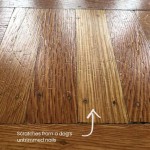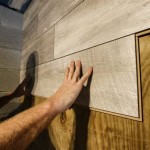Natural Stone Flooring For Bathrooms: A Comprehensive Guide
Natural stone flooring offers a luxurious and durable option for bathrooms, adding elegance and timeless appeal to these frequently utilized spaces. The inherent beauty and unique characteristics of natural stone, coupled with its practical benefits, make it a popular choice for homeowners seeking to elevate their bathroom design. This article delves into the various aspects of incorporating natural stone flooring into bathroom projects, covering material selection, advantages, disadvantages, installation considerations, and maintenance requirements.
Material Selection: A Diverse Palette
The term "natural stone" encompasses a broad range of materials, each possessing distinct visual and performance characteristics. Common choices for bathroom flooring include granite, marble, travertine, slate, limestone, and sandstone. Understanding the properties of each stone type is crucial for selecting the most suitable option for a specific bathroom environment.
Granite is an igneous rock known for its exceptional hardness and resistance to staining, scratching, and water damage. Its dense composition makes it ideal for high-traffic areas and bathrooms prone to moisture exposure. Granite's availability in a wide array of colors and patterns allows for versatile design applications.
Marble, a metamorphic rock, is prized for its elegant veining and smooth, polished surface. While aesthetically appealing, marble is more porous and susceptible to staining and etching compared to granite. Proper sealing and regular maintenance are essential to preserve its beauty in a bathroom setting. Marble's luxurious appearance makes it a popular choice for high-end bathrooms.
Travertine is a form of limestone characterized by its distinctive pitted surface. These naturally occurring voids can be filled during the manufacturing process to create a smooth, uniform surface. Travertine offers a warm, earthy aesthetic and is relatively durable. However, like marble, it requires sealing to prevent water penetration and staining.
Slate is a fine-grained metamorphic rock known for its natural cleft texture and durability. Its slip-resistant surface makes it a practical choice for bathrooms, particularly in areas prone to splashing. Slate is available in a range of colors, including gray, black, green, and purple, offering diverse design possibilities. However, slate can be more challenging to install due to its irregular thickness.
Limestone is a sedimentary rock composed primarily of calcium carbonate. While generally durable, limestone is more porous than granite or slate and requires regular sealing to protect against staining and water damage. Its soft, neutral tones create a calming and inviting atmosphere in bathrooms.
Sandstone, another sedimentary rock, is characterized by its granular texture and warm, earthy colors. While visually appealing, sandstone is relatively porous and susceptible to staining and abrasion. It is generally not recommended for high-moisture areas within the bathroom unless properly sealed and maintained.
Advantages of Natural Stone Flooring in Bathrooms
The appeal of natural stone flooring extends beyond its aesthetic qualities, encompassing a range of practical benefits that enhance the functionality and longevity of a bathroom space. These advantages include durability, timeless appeal, added value, and unique character.
Durability is a key advantage of natural stone flooring. Properly installed and maintained, natural stone can withstand the rigors of daily use and last for decades. Stone's inherent resistance to wear and tear makes it a worthwhile investment for homeowners seeking long-lasting flooring solutions. This durability is particularly important in bathrooms which experience frequent use and significant moisture exposure.
The timeless appeal of natural stone ensures that it remains a stylish and desirable flooring option for years to come. Unlike trendy materials that may quickly become outdated, natural stone provides a classic and enduring aesthetic that complements a variety of design styles. This timeless quality enhances the long-term value and appeal of a bathroom space.
Installing natural stone flooring can increase the value of a home. Its perceived luxury and durability contribute to a higher resale value, making it a worthwhile investment for homeowners planning to sell their property in the future. Potential buyers often appreciate the quality and aesthetic appeal of natural stone, viewing it as a desirable upgrade.
Each piece of natural stone is unique, featuring subtle variations in color, veining, and texture. This inherent variability adds character and visual interest to a bathroom floor, creating a one-of-a-kind design. The natural imperfections and variations are part of the stone's charm and contribute to its overall aesthetic appeal. These variations also make it easier to create a custom floor design that reflects a homeowner's individual style.
Disadvantages and Considerations
While natural stone flooring offers numerous advantages, it is important to acknowledge potential drawbacks and considerations before making a final decision. These considerations include cost, maintenance requirements, installation complexity, and potential for coldness underfoot.
The initial cost of natural stone flooring can be higher compared to other flooring options, such as ceramic tile or vinyl. The cost of the material itself, coupled with the labor involved in professional installation, can represent a significant investment. Homeowners should factor these costs into their budget and weigh them against the long-term benefits of natural stone.
Certain types of natural stone, such as marble and limestone, require regular sealing to protect against staining and water damage. Additionally, periodic cleaning with specialized stone cleaners is necessary to maintain their appearance and prevent the buildup of grime. Homeowners should be prepared to invest the time and effort required to properly maintain natural stone flooring.
The installation of natural stone flooring is generally more complex than installing other types of flooring. Proper subfloor preparation, precise cutting, and accurate setting are crucial for achieving a professional and long-lasting result. It is generally recommended to hire a qualified and experienced installer to ensure the job is done correctly. This can add to the overall cost but can prevent problems in the long run.
Natural stone can feel cold underfoot, particularly in colder climates. This can be mitigated by installing radiant floor heating, which provides a comfortable and energy-efficient way to warm the flooring. However, adding radiant floor heating will increase the overall cost of the project and require additional installation considerations.
Installation Considerations for Bathrooms
Proper installation is critical to the success of any natural stone flooring project, particularly in a bathroom environment where moisture and humidity are prevalent. Key considerations include subfloor preparation, waterproofing, and sealing.
A stable and level subfloor is essential for preventing cracks and unevenness in the finished stone floor. The subfloor should be thoroughly cleaned and inspected for any signs of damage or weakness. If necessary, the subfloor should be repaired or reinforced before installing the stone. This may involve adding a new layer of plywood or cement board.
Waterproofing is crucial for protecting the subfloor and surrounding structures from water damage. A waterproof membrane should be applied to the subfloor before installing the stone. This membrane will prevent water from seeping through the grout lines and damaging the underlying materials. There are a variety of waterproofing membranes available, including liquid-applied membranes and sheet membranes.
Sealing the stone after installation is essential for protecting it from staining and water damage. A high-quality stone sealer should be applied to the entire surface of the floor, including the grout lines. The sealer will penetrate the pores of the stone and create a barrier against moisture and stains. The frequency of sealing will depend on the type of stone and the level of traffic in the bathroom.
Maintenance and Care
Proper maintenance and care are essential for preserving the beauty and longevity of natural stone flooring in bathrooms. Regular cleaning, sealing, and preventative measures will help to keep the stone looking its best.
Regular cleaning is essential for removing dirt, grime, and spills from the stone's surface. Use a pH-neutral stone cleaner and a soft mop or cloth to clean the floor regularly. Avoid using harsh chemicals or abrasive cleaners, as these can damage the stone's surface. It is also important to wipe up spills immediately to prevent staining.
As mentioned earlier, periodic sealing is necessary to protect the stone from staining and water damage. The frequency of sealing will depend on the type of stone and the level of traffic in the bathroom. It is important to use a high-quality stone sealer that is specifically designed for the type of stone being used. Follow the manufacturer's instructions for application and drying time.
Preventative measures can help to minimize the risk of damage to your natural stone flooring. Use mats or rugs at entrances to trap dirt and debris. Avoid wearing shoes with sharp heels or cleats on the stone floor. Place felt pads under furniture legs to prevent scratching. By taking these simple steps, you can help to protect your stone floor from damage and extend its lifespan.

Natural Stone Tiles For Your Bathroom Dt Blog

How You Would Use Natural Stone In Your Bathroom

Kid And Pet Friendly Natural Stone Flooring Use

Options For Natural Stone Kitchen And Bathroom Flooring Tile

Natural Stone Tile And Usage Areas Country Floors

Natural Stone Bathroom Decor

Marble Granite Or Slate Which Natural Stone Tile To Choose

Reasons To Use Natural Stones In Bathrooms

Newstar Natural Stone Beige Travertine Tile Wall Cladding Anti Slip Floor Marble Bathroom Tiles China Made In Com

The Advantages Of Stone Tiled Bathrooms Southland
Related Posts








